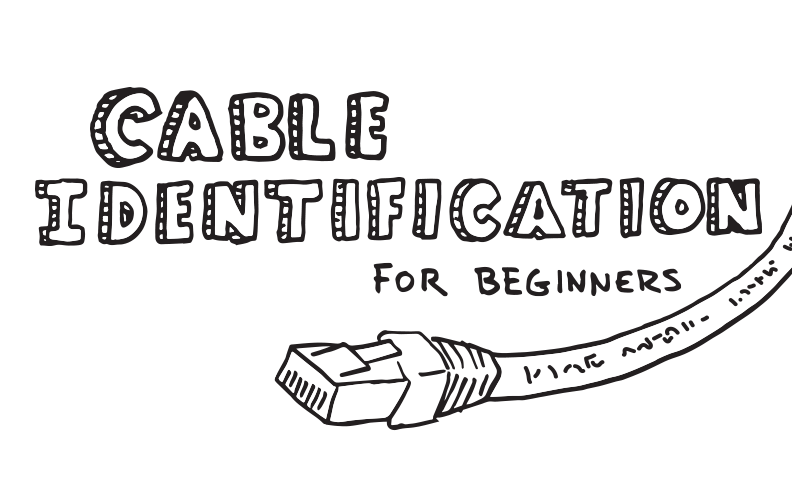Payment methods accepted

Ethernet Cable Identification for Beginners: Reading Print Legends
Written by Don Schultz, trueCABLE Senior Technical Advisor, Fluke Networks Copper/Fiber CCTT, BICSI INST1, INSTC, INSTF Certified
Here you are, trying to plug an Ethernet cable into your favorite device. One small problem: you have no idea how to identify what kind of network Ethernet cable it is and if it will work. What kind of cable is it? Does size really matter?
The answers are found in the cable jacket printing. This is also known as the “ledger”. Here is a great example of what you are looking for:

The picture shows what a typical Ethernet cable jacket ledger looks like. For clarity, here is the full description that is not easy to get a close-up picture of:
trueCABLE, CMR 75C 4PR UTP 24AWG ETL cETLus VERIFIED CAT5 ENHANCED 350MHz TIA/ EIA 568-C.2 RoHS XXXXFT MM/YY
Direct translation of what is above:
- Manufacturer (trueCABLE in this example)
- UL Jacket Fire Rating (CMR or riser rated in this example)
- Maximum Operating Temperature in Celsius (75 degree C for this cable)
- Number of twisted pairs in the cable (4 pairs, yielding 8 total conductors)
- Shielding type (if any)--in this case it is unshielded so U/UTP (UTP generically)
- Wire gauge (given in the American Wire Standard as 24AWG). The higher the number, the thinner the copper conductor is.
- Certifications. In this example ETL with a cETLus approval mark, plus the fact it was actually Verified by Electrical Testing Laboratories (ETL). The cETLus mark certifies that a product complies with North American electrical and safety standards, including those written by Underwriters Laboratories (UL) and the Canadian Standards Association (CSA). This mark signifies UL Listing by proxy.
- Category cable type, in this example Category 5 Enhanced or Cat5e
- Cable bandwidth in MHz, in this example 350MHz
- ANSI/TIA standard the Ethernet cable was constructed to, in this case 568-C.2
- RoHS. This means lead free and restricted use of other hazardous materials used in construction and manufacturing of the product.
- XXXXFT indicates what foot marker you are at and is useful if the cable is being run and measured for installation
- MM/YY indicates month and year of manufacture, example would be 01/19 for January 2019
So, in common English here is what you really need to know:
- The cable is certified as safe electrically and fire safe if installed according to the CMR rating (inside walls, indoors only)
- The cable is Cat5e cable, which means it will support 10/100/1000 Mbp/s up to 328 feet or 100 meters
- The wire gauge is 24AWG (not including the insulation around the individual conductor)
- You can use it in environments up to 75 degrees Celsius or 167 degrees Fahrenheit
- The cable is unshielded or commonly called UTP. Technically, it is actually U/UTP if you want to get fancy about the whole thing...
So, there you have it! Not too tough. Is there a standard way of printing this stuff on cables? Not precisely. Most manufacturers will follow the above example but remember that each cable is different and each manufacturer has creative license to mark it as they see fit. Knowing how to read the ledger, and sometimes between the lines, gives you the edge!
trueCABLE presents the information on our website, including the “Cable Academy” blog and live chat support, as a service to our customers and other visitors to our website subject to our website terms and conditions. While the information on this website is about data networking and electrical issues, it is not professional advice and any reliance on such material is at your own risk.



































